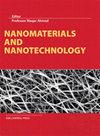Performance improvement of microbial fuel cells through assembling anodes modified with nanoscale materials
IF 3.3
3区 材料科学
Q2 MATERIALS SCIENCE, MULTIDISCIPLINARY
引用次数: 3
Abstract
In microbial fuel cell (MFC), the anode is the carrier of microbial attachment and growth, and its material and surface structure play a vital role in MFC electricity generation. Therefore, anode surface optimization is an effective way to improve MFC performance. Although the power generation of bacteria has been confirmed and studied as early as the beginning of the 20th century, up to now, MFC still has the extremely challenging problem of low current and low power output in practical application. To improve the performance of MFC, several strategies have been applied to enhance the bacterial extracellular electron transfer. One promising technology is the genetic engineering approach, and some outstanding research results have been obtained. Another effective strategy is to design and fabricate a high-performance electrode because anode material is the essential factor affecting MFC performance, which provides surface active sites for microbial adhesion, reproduction and interfacial electron transfer. At present, the MFC anodes mainly include carbon-based electrodes and a variety of metal electrodes, but untreated anodes have always been unable to overcome the obstacle of low power output. Anode modification, a common and effective method, is employed for improving the power output of MFC. For this reason, this review is primarily focused on the applications of various anode materials and its nanoscale modification in the field of MFC, including the influence of different anode materials on the power output of MFC, and analyzes the reasons why anode modification enhances output performance. Furthermore, the influence of anode research on the practical application of MFC in the future is prospected.纳米材料修饰阳极组装提高微生物燃料电池性能
在微生物燃料电池(MFC)中,阳极是微生物附着和生长的载体,其材料和表面结构在MFC发电中起着至关重要的作用。因此,阳极表面优化是提高MFC性能的有效途径。尽管早在20世纪初就已经对细菌的发电进行了证实和研究,但时至今日,MFC在实际应用中仍然存在低电流、低功率输出的极具挑战性的问题。为了提高MFC的性能,已经应用了几种策略来增强细菌细胞外电子转移。基因工程方法是一种很有前途的技术,已经取得了一些突出的研究成果。另一种有效的策略是设计和制造高性能电极,因为阳极材料是影响MFC性能的重要因素,它为微生物粘附、繁殖和界面电子转移提供了表面活性位点。目前,MFC阳极主要包括碳基电极和各种金属电极,但未经处理的阳极始终无法克服低功率输出的障碍。阳极改性是提高MFC功率输出的一种常用而有效的方法。因此,本文主要综述了各种阳极材料及其纳米改性在MFC领域的应用,包括不同阳极材料对MFC功率输出的影响,并分析了阳极改性提高输出性能的原因。展望了阳极研究对MFC实际应用的影响。
本文章由计算机程序翻译,如有差异,请以英文原文为准。
求助全文
约1分钟内获得全文
求助全文
来源期刊

Nanomaterials and Nanotechnology
NANOSCIENCE & NANOTECHNOLOGY-MATERIALS SCIENCE, MULTIDISCIPLINARY
CiteScore
7.20
自引率
21.60%
发文量
13
审稿时长
15 weeks
期刊介绍:
Nanomaterials and Nanotechnology is a JCR ranked, peer-reviewed open access journal addressed to a cross-disciplinary readership including scientists, researchers and professionals in both academia and industry with an interest in nanoscience and nanotechnology. The scope comprises (but is not limited to) the fundamental aspects and applications of nanoscience and nanotechnology
 求助内容:
求助内容: 应助结果提醒方式:
应助结果提醒方式:


